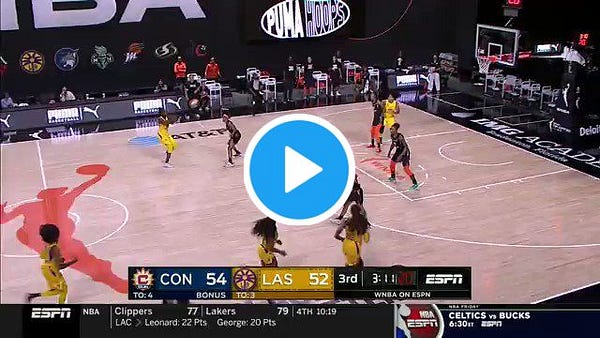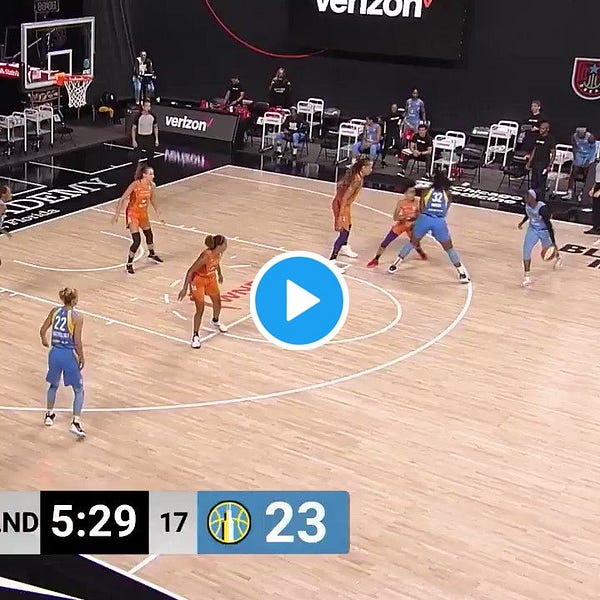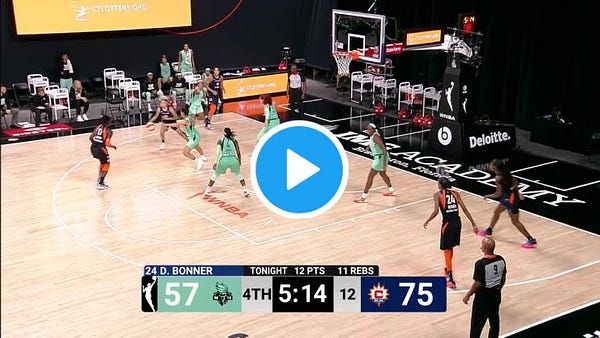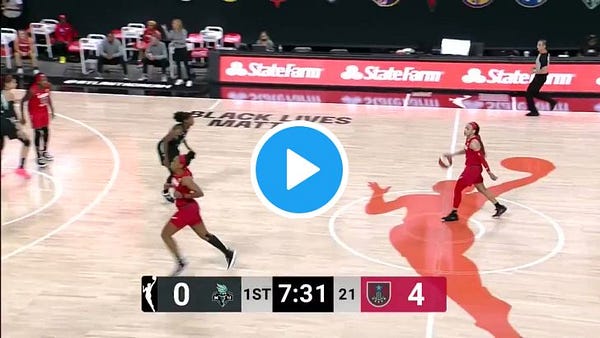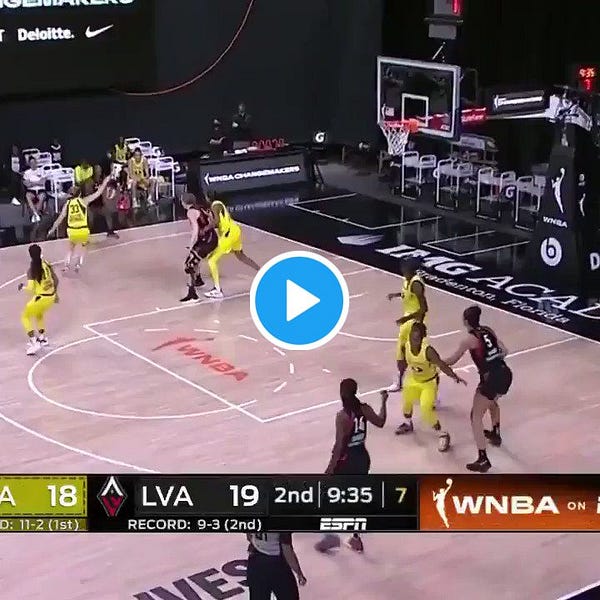Hi, it’s me, Matt Ellentuck.
~ First, some news ~
Here’s Basketball has its first sponsor! I’m hype to work with Homefield Apparel, a good brand that sells good college tees. And guess what? We’ve got discount codes for MERCH. If you type ELLENTUCK in as the promo code, you’ll get 20 percent off your purchase, so uhh do that!

~ Ok, now let’s go back to sports ~
With the regular season almost wrapped up, I think it’s time to talk about the players who’ve surprised me the most with breakout performances. Remember, this bubble season wasn’t easy for anyone. The pandemic complicated training routines and schedules, teams were without key players due to opt-outs, injuries were frequent, and the fight for social justice was on everyone’s mind. It’s important think about that when comparing any coach or player’s performance from last year to this one.
But there have been a handful of players who’ve broken out and showed they deserve bigger roles next year and beyond after finally getting minutes to shine.
Here’s one player from each team (and two from the Sky) who’ve surprised me most this year, alphabetized by last name.
Julie Allemand, Indiana Fever
The 2020 WNBA rookie class is incredibly impressive, and Allemand is a big part of why. Yes, she’s 24 years old (a bit older than a typical first-year player since she was drafted in 2016), but she’s a third-round pick playing 33 minutes per game. She’s scoring eight points, six assists and four rebounds, and making 46 percent of her four three-point attempts per night. She immediately became Indiana’s lead guard, and now they’re fighting for a playoff spot.
The Fever can’t feel great watching someone they could’ve picked in this year’s draft, Chennedy Carter, look like an all-world point guard, but they must feel a helluva lot better watching Allemand acclimate to WNBA basketball so quickly.
Seimone Augustus, Los Angeles Sparks
I’m an absolute clown for thinking Augustus would be a bench-warmer in L.A. just there to give guidance to the younger players around her. Augustus has game left, and she should get playing time in the playoffs. In the bubble, she’s scoring seven points per game in 15 minutes, draining 54 percent of her shots. She’s made 10 out of 18 threes, too.
Is Augustus the take-over wing she was in her prime? No. But does she have a whole lot more left in the tank? Yeah! That’s something we couldn’t say with confidence last year.
Kahleah Copper, Chicago Sky
The Sky’s 2017 Elena Delle Donne trade looks a little bit better because of how well Copper has developed. After scoring just seven points per game for the last three years, the 6’1 guard is scoring 16 points per game along with five rebounds and two assists. She’s making a career-high 51 percent of her shots and 40 percent of three, three-point attempts per night.
Copper’s a huge reason that Chicago’s stayed in contention despite the injuries to Diamond DeShields and Azura Stevens. Without her slashing abilities, the Sky probably fall to the bottom tier of playoff teams.
Crystal Dangerfield, Minnesota Lynx
If you claim to have had Dangerfield at the top of your Rookie of the Year list, you’re either an absolute liar or Crystal’s family member. We knew Dangerfield’s talent as one of the best guards for one of the best college teams in the country, but it’s been incredible to watch the 5’5 guard’s game translate as well as it has to the pro level. (And no, even if Sabrina Ionescu, Carter and Satou Sabally hadn’t been injured, we’d still be talking about Dangerfield in the ROY conversation.)


Dangerfield’s frozen defenders off the dribble since the very first game of the season. It didn’t take her very long to earn a starting spot for the Lynx. She’s averaging 16 points on 46 percent shooting (35 percent from range on five attempts) and dishing three assists per night.
The Lynx don’t post an 11-5 record through 16 games despite injuries to Sylvia Fowles and Karima Christmas-Kelly without Napheesa Collier’s launch into superstardom, AND Dangerfield’s unreal rookie breakout.
I can’t believe she was a second-round pick.
Bria Hartley, Phoenix Mercury
It’s me, the clown again. Ok, I wasn’t alone in calling Hartley’s contract one of the worst of the 2020 offseason, but credit Phoenix, because she had a great year before tearing her ACL.
A year after scoring just 10 points on 38 percent shooting from the field (33 percent from distance), she scored 15 per night on 42 percent shooting overall, and, most impressively, shot 39 percent from range on five attempts per night. Hartley was a pick-and-roll machine, roaming off Brittney Griner’s screens, and haunting defenses as a threat just as great as Diana Taurasi and Skylar Diggins-Smith off the bounce.
It’s amazing how moving to a different team can change a player, and I hope she recovers in time for next season.

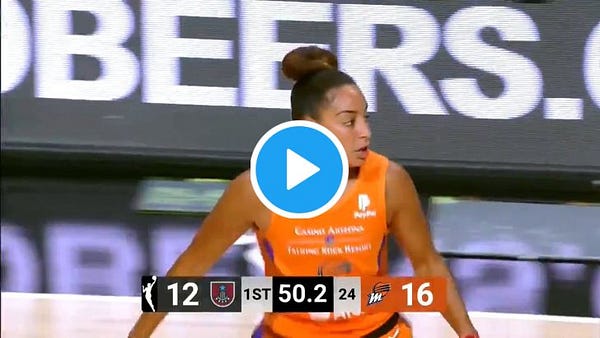
These numbers per Synergy:
2019: On 86 possessions as the ball-handler in pick-and-rolls, she scored .64 points per 100 possessions. That ranked in just the 33rd percentile league-wide.
2020: On 81 possessions as the ball-handler in pick-and-rolls, she scored .89 points per 100 possessions. That ranks in the 59th percentile league-wide.
Myisha Hines-Allen, Washington Mystics
All of us in D.C. knew that Hines-Allen was super talented and just buried behind a bunch of other super-talented championship-caliber pieces in 2019. But I’m not sure how many of us thought she was going to be this good.


A year after scoring just 2.3 points per game, Hines-Allen is averaging 16 points on 49 percent shooting from the field, and shooting 42 percent on three, three-point tries per game. At times, she’s looked like a superstar, scoring 27 points in the opening game, and a 35-point double-double in another. She can score going downhill, spotting up from range, or powering her way to the bucket. She’s a really good player most teams in this league would feature as a starter. She won’t get this same role next year when the Mystics’ championship group returns, but she’s more than earned a serious bench role.
There weren’t many wins for the Mystics this year, but Hines-Allen was a big one.
Brionna Jones, Connecticut Sun
Jones was essentially unplayable last year in the Finals against the Mystics, and I was weary of Connecticut going to her as Jonquel Jones’ replacement. But she’s put together a really nice season, tripling her scoring average to 11 points per game on 57 percent shooting with a career-high six rebounds.
She’s still a traditional big who’ll have trouble guarding the unicorn bigs like Breanna Stewart and Delle Donne. But when Jonquel Jones comes back next season, she’ll be a much better and more experienced backup for a team with title aspirations.
Betnijah Laney, Atlanta Dream
Barring something wild happening in the last few games of the season, Laney is my pick for Most Improved Player of the Year. Last year, she scored just six points on 36 percent shooting from the floor (30 percent from three.) This year, she’s averaging 16 points on 49 percent shooting (39 percent from three!) She’s a whole different player, doubling her assists to four per game, too.
Three months ago, the Fever CUT Laney. Now she’s an All-Star caliber starter for the Dream. What a career 180 in Year 5 for her.
Marina Mabrey, Dallas Wings
I wasn’t even confident Mabrey would make a team this year, and now she’s starting for a Wings team that could make the playoffs!? As a rookie, Mabrey made just 27 percent of her threes. She was a tough defender, but fell back in the Sparks’ rotation enough to be traded in the offseason.

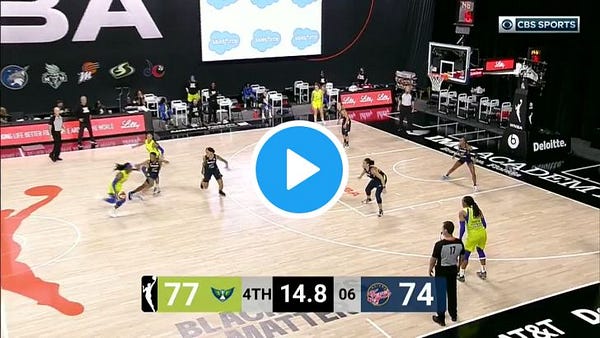
Now, she’s draining step-back threes, scoring nine points per game on 46 percent shooting from the field, and making 44 percent shooting of four tries per game from distance. She’s a serious contributor for Dallas.
Ezi Magbegor, Seattle Storm
The rookie everyone talked so much about exceeded even those expectations as a 21-year-old thrown into a win-or-it’s-a-failure situation. The 6’4 big is mobile, strong and has soft touch. She picked up the slack when Natasha Howard stumbled in the opening few games of the season, and looks like a secondary frontcourt piece made to supplement Breanna Stewart for years to come.


She’s scoring seven points on 55 percent shooting in 13 minutes per game. And for the analytics nerds looking further into her future … she’s made one of the three, three-point shots she’s taken this year.
(Eyes emoji)
Azura Stevens, Chicago Sky
I couldn’t include just one Sky player, because Stevens has stepped up as much as Copper has this season. It’s a shame a knee injury cost her the rest of the season.
When she played, Stevens looked unicorn-like, and Dallas has to be wondering why they gave up on her so soon. In her third season, she scored a career-high 12 points per game on 50 percent shooting from the field, and 39 percent shooting from distance (three tries per game.) She also posted two blocks and a steal per night.


I don’t know how long Chicago can last in the playoffs this year without Stevens or DeShields. But next year …
Jackie Young, Las Vegas Aces
JACKIE YOUNG! Her shaky shooting and mediocre decision-making made her tough to watch as a rookie thrown into a big role last season. I really questioned where Vegas was going with her. But what a difference a year can make. In Year 2, Young is as confident as ever running the floor. Her points per game have jumped from seven to 10 a night on 46 percent shooting (14 percent better than 2019.)
Moving her off the ball has really helped her become an effective player. Shooting where she’s comfortable, she’s become a piece to the Aces’ puzzle.
Amanda Zahui B, New York Liberty
Zahui B is finally playing in an offense that suits her talents. The sixth-year big is averaging a career-best 10 points, nine rebounds and two assists. She’s also making 37 percent of five three-point looks, nearly doubling her attempts.

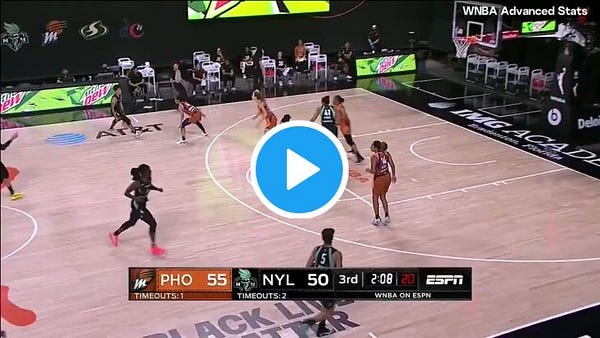
Zahui B hasn’t been consistently awesome all year, but she’s shown greatness in spurts, which is really important for this young Liberty team. The game will come a lot easier to her when Sabrina Ionescu and Asia Durr hopefully return next year. This year was important for both New York, and Zahui B herself, to understand what she’s capable of, and where her game can grow from here.
Ok, that’s it from me.
If you enjoyed this post, I hope you’ll share it with friends using this link:
Or subscribe to get the newsletter delivered to your inbox for free using this link:
Or pay $7 per month to receive access to additional WNBA fantasy sports newsletters, and support the work I do, by using this link:
I’m also still looking for work writing about the WNBA!
If you have any leads, please email: mellentuck10@gmail.com or DM me on Twitter: @mellentuck. I miss doing this as a full-time job. All of my previous work can be found at SB Nation, where I worked for the past four years before being laid off due to the pandemic. I uhh also wrote for the New York Times, which you can read here.






